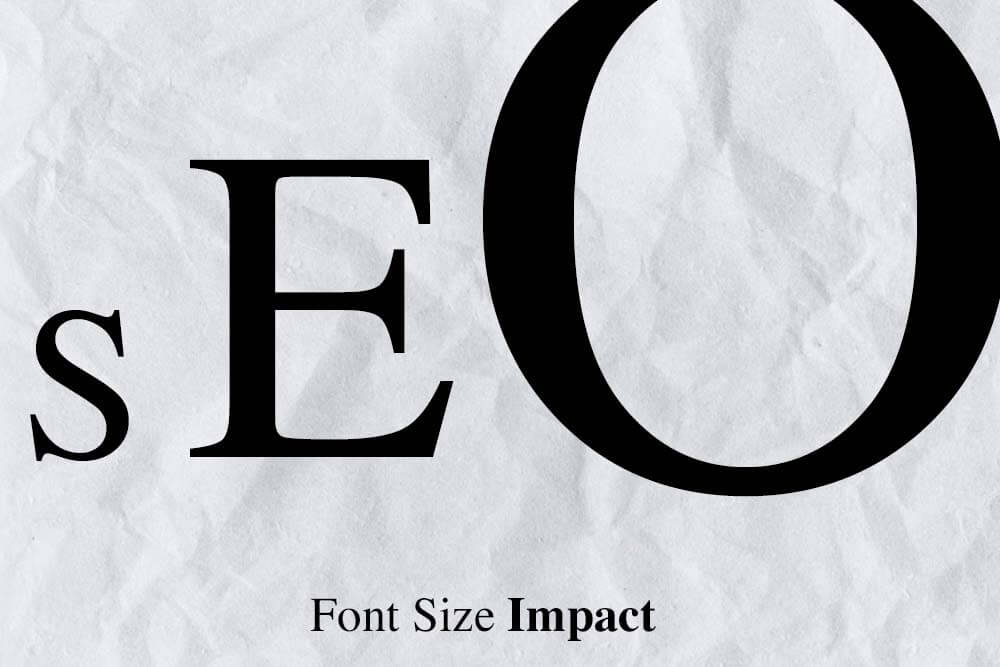If you Google “SEO ranking factors” it’s unlikely that you’d see font size on any of the major lists.
Still, we asked the questions: “Does font size affect SEO?” and if so, “what is the ideal font size for SEO?”
While there are some helpful guides of what people think are the ideal sizes for website fonts we couldn’t find a definitive answer, so, we set out to find the answer ourselves by analyzing over 9000 URLs ranking for keywords on Google.
Here’s what we found:
Key Findings:
- Out of the 5 variables tested, font size had a significant correlation with 4 key ranking factors including organic traffic, authority score, referring domains, and total backlinks.
- There was no statistically significant correlation directly between font size and rankings in the top 100 URLs ranking for most keywords tested across multiple industries (with fashion being the exception).
- The average font size for websites ranking in the top 100 across all industries tested was 16.05.
What We Tested
When we set out to find the ideal paragraph font size for SEO there were several factors we wanted to check font size against.
Rankings was the obvious one, but while we were at it we added several data points from SEMrush including their Authority score, estimated traffic, referring domains and total backlinks.
To begin, we identified 100 keywords split across these 10 industries:
- Business
- Education
- Entertainment
- Fashion
- Finance
- Food
- Health and wellness
- Marketing and sales
- Technology
- Travel
We did our best to select medium-tail, informational keywords as they would be more likely to include the “best” blogs and articles out there.
We used SEMrush to export data on the top 100 URLs for each keyword and then created a custom crawler to find the most common paragraph font size for each URL.
Some findings were what we expected, but some were quite surprising!
Font Size and Rankings
These were the only variables in our test that had no significant correlation across all keywords (p-value: 0.117).
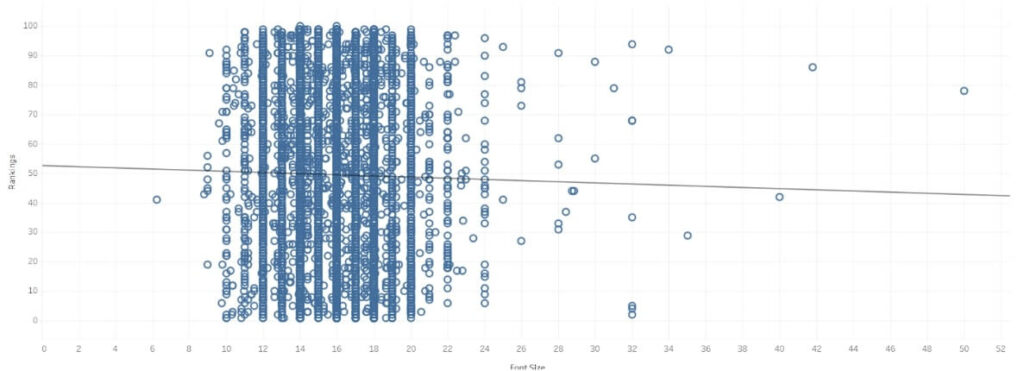
When we broke this data down by industry we found similar results in nearly every sector:

The exception here was the fashion industry:
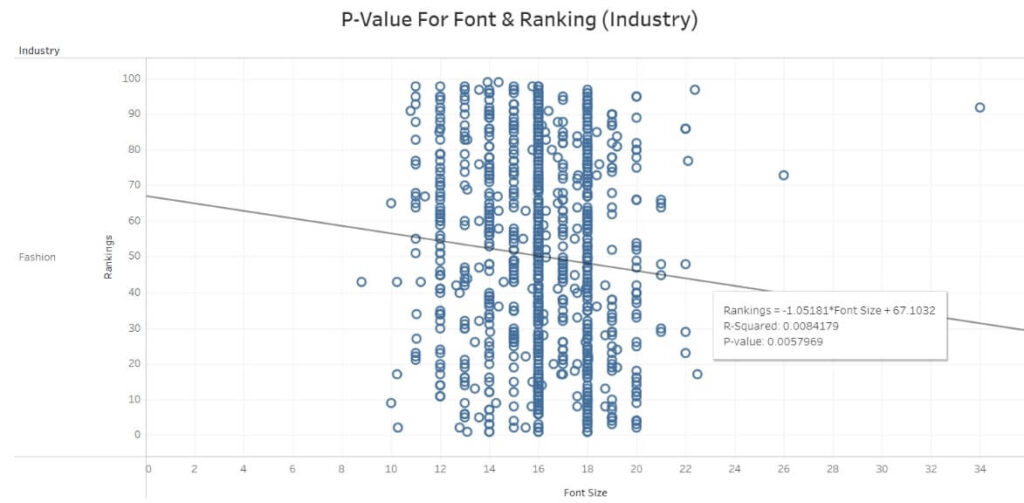
We suspect that Fashion is the outlier mainly due to our sample size and not because Google actually considers font size for rankings within this industry and no others.
As with other industries, most font sizes on fashion websites are either 16 or 18.
Font Size and Traffic
Some font sizes are correlated with more traffic (p-value: <0.0001).
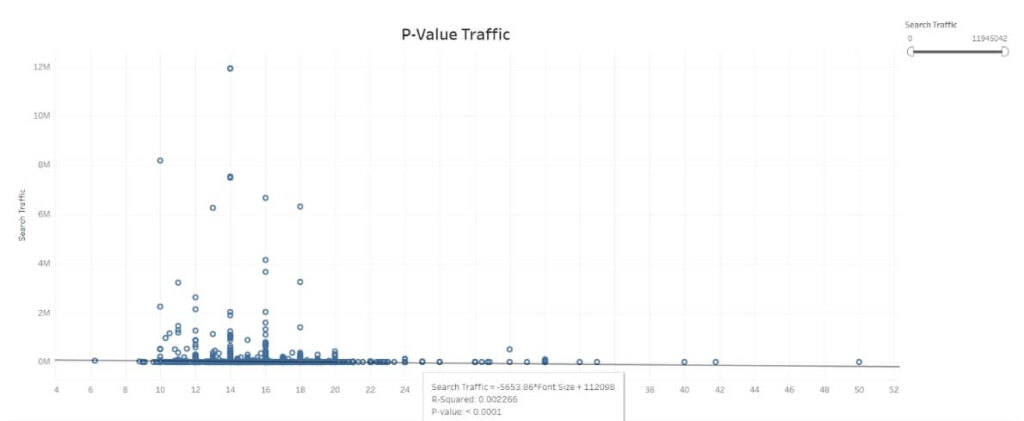
You’ll notice that sites getting more than a little traffic are concentrated around the 12, 14, 16, and 18 font sizes.
It appears that publishing content in a font much larger than 20 or much smaller than 10 will strongly correlate with very little organic traffic.
Font Size and Authority Score
Some font sizes are correlated with a higher or lower SEMrush Authority Score (p-value: <0.0001).
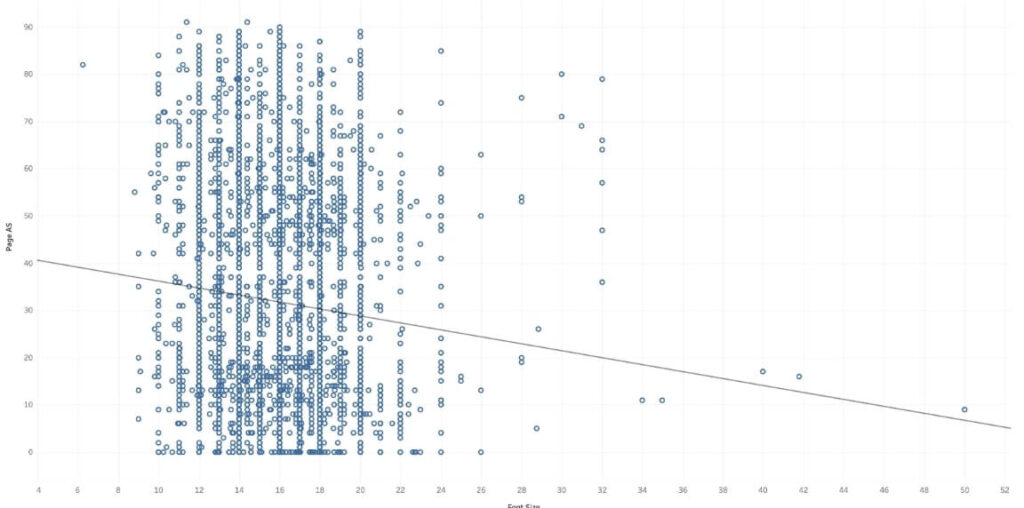
Pages with font sizes larger than 24 and smaller than 10 are much less likely to have a high Authority Score. Pages with font sizes within that range may still have low authority scores (having a proper font size will certainly not equate to a higher Authority Score), but it does seem that authority (as measured by SEMrush) is more likely to be associatedw with web pages using a font size within the range of normal.
Font Size and Referring Domains + Backlinks
Some font sizes are correlated with referring domains.
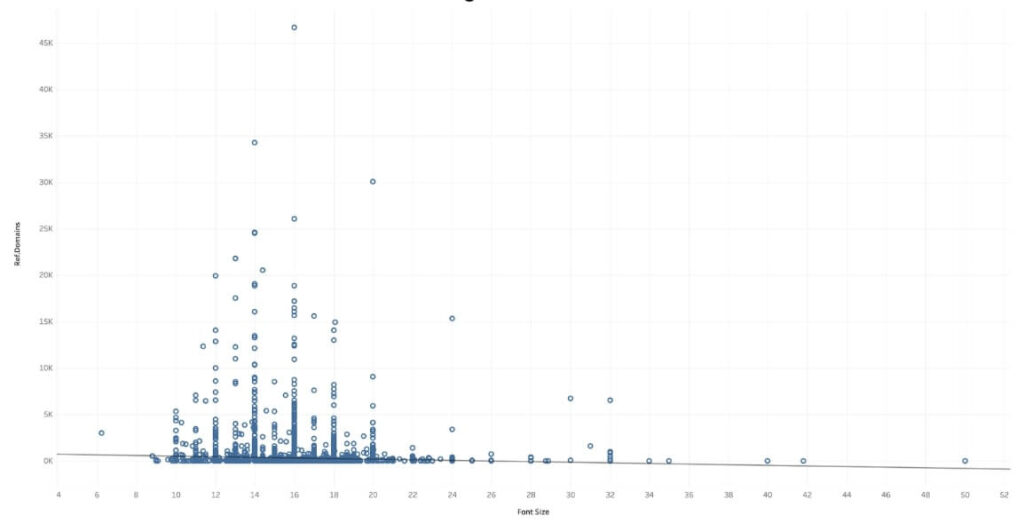
Similar to traffic, the comparison of these numbers reveal the tendency of domains to refer their users to pages with font sizes of 12, 14, 16, and 18.
Comparing traffic to backlinks unsurprisingly reveals a similar result:
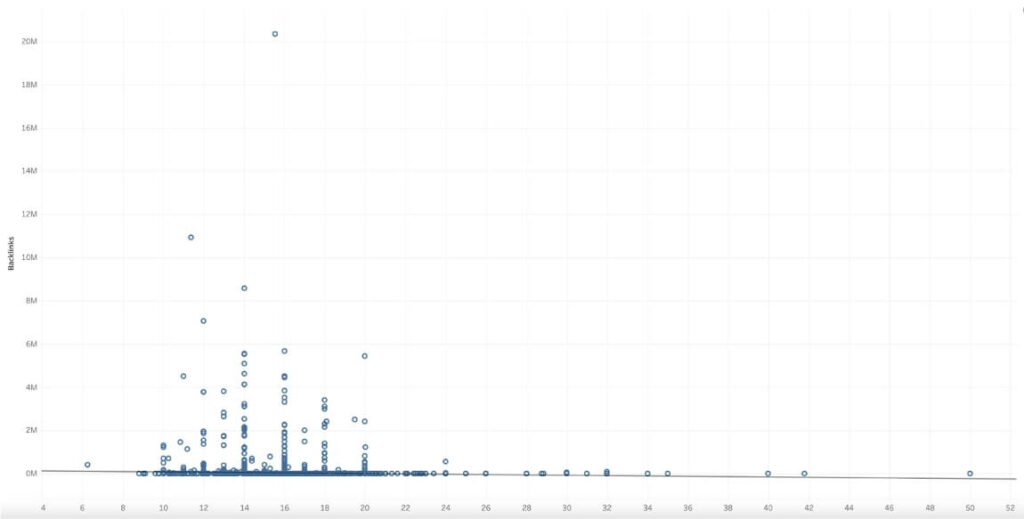
What is the Average Font Size?
The average font size from all pages tested was 16 (16.05 to be exact).
What Does This Mean for UX and SEO?
Based on our findings, we believe that font size plays a minimal role in your site’s ability to drive organic traffic and rankings. However, we have discovered a few general best practices to consider when designing the look and feel of you site.
- Choose a Font That Gives Your Users a Pleasant Experience
Fonts smaller than 12 or larger than 18 are probably too large for your users. Using common font sizes will give your users a better experience on your site. - Avoid Font Sizes that Give Publishers a Reason Not to Link To Your Page
Domains are more likely to link to your page if it contains a common font, users are more likely to share the page, and in turn it will receive more traffic. - When in Doubt Look to the Big Sites
If you’re not sure what font size to choose you can look to the sites having success in your industry. Google currently recommends (and uses) a base font size 16px. Another reason to review large sites within your industry is to find opportunities to improve on the competition. If you are competing in an antiquated industry that still fills every space of their site with size 10 font it may be best to give your site a fresh look with a larger font and margins.
